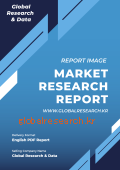| ■ 영문 제목 : 3D Display Market Size, Share & Trends Analysis Report By Product (Volumetric Display, Stereoscopic Display, Head Mounted Display), By Technology, By Application, By Region, And Segment Forecasts, 2023 - 2030 | |
 | ■ 상품코드 : GRV23MR004 ■ 조사/발행회사 : Grand View Research ■ 발행일 : 2023년 2월 ■ 페이지수 : 100 ■ 작성언어 : 영어 ■ 보고서 형태 : PDF ■ 납품 방식 : E메일 (납기:3일) ■ 조사대상 지역 : 세계 ■ 산업 분야 : IT |
| Single User (1인 열람용) | USD4,950 ⇒환산₩6,930,000 | 견적의뢰/주문/질문 |
| Multi User (5인 열람용) | USD5,950 ⇒환산₩8,330,000 | 견적의뢰/주문/질문 |
| Global/corporate License (기업 열람용) | USD7,950 ⇒환산₩11,130,000 | 견적의뢰/구입/질문 |
|
※가격옵션 설명 - 납기는 즉일~2일소요됩니다. 3일이상 소요되는 경우는 별도표기 또는 연락드립니다. - 지불방법은 계좌이체/무통장입금 또는 카드결제입니다. |
| 미국 Grand View Research (그랜드뷰리서치)의 본 조사 보고서는 세계의 3D 디스플레이 시장 규모가 2023년부터 2030년 사이에 CAGR 19.0% 증가하여, 2030년에는 4,131.3억 달러에 이를 것으로 예상하고 있습니다. 본 자료는 세계의 3D 디스플레이 시장을 조사대상으로 하여, 조사 방법 및 범위, 개요, 시장 변동/동향/범위, 제품별 (입체 디스플레이, 3차원 디스플레이, 헤드 마운트 디스플레이) 분석, 기술별 (DLP, PDP, OLED, LED) 분석, 용도별 (TV, 스마트폰, 모니터, 모바일 컴퓨팅 기기, 기타) 분석, 지역별 (북미, 유럽, 아시아 태평양, 기타 지역) 분석, 경쟁 현황 등의 내용을 수록하고 있습니다. 덧붙여 본 리포트는 AUO Corporation. 등의 기업 정보가 포함되어 있습니다. ・조사 방법 및 범위 ・개요 ・시장 변동/동향/범위 ・세계의 3D 디스플레이 시장 규모 : 제품별 - 입체 디스플레이의 시장 규모 - 3차원 디스플레이의 시장 규모 - 헤드 마운트 디스플레이의 시장 규모 ・세계의 3D 디스플레이 시장 규모 : 기술별 - DLP 기술의 시장 규모 - PDP 기술의 시장 규모 - OLED 기술의 시장 규모 - LED 기술의 시장 규모 ・세계의 3D 디스플레이 시장 규모 : 용도별 - TV에 사용되는 3D 디스플레이의 시장 규모 - 스마트폰에 사용되는 3D 디스플레이의 시장 규모 - 모니터에 사용되는 3D 디스플레이의 시장 규모 - 모바일 컴퓨팅 기기에 사용되는 3D 디스플레이의 시장 규모 - 기타 용도의 시장 규모 ・세계의 3D 디스플레이 시장 규모 : 지역별 - 북미의 3D 디스플레이 시장 규모 - 유럽의 3D 디스플레이 시장 규모 - 아시아 태평양의 3D 디스플레이 시장 규모 - 기타 지역의 3D 디스플레이 시장 규모 ・경쟁 현황 |
3D Display Market Growth & Trends
The global 3D display market size is expected to reach USD 413.13 billion by 2030, registering a CAGR of 19.0% from 2023 to 2030, according to a new study by Grand View Research, Inc. The gaming industry has enhanced the complete gaming experience using 3D technology, which drives market growth. Moreover, rising interest in LED and OLED technologies offering better picture quality and performance than traditional display technologies will also result in market development.
Additionally, surging demand for enhanced imaging and viewing experience is estimated to be one of the key trends augmenting the market. The rising use of 3D technologies across a variety of applications in several industries is further expected to boost market growth.
Asia-Pacific is estimated to witness significant growth and become the highest revenue-generating regional market by 2030. Robust growth of the gaming and entertainment industries, especially in China, India, and Japan is poised to play a vital role in accelerating the adoption rate during the forecast period. The presence of major OEMs is contributing significantly to regional growth.
Stereoscopic 3D products are useful in numerous applications including TVs, smartphones, tablets, and computers. Key players in the market have introduced compatibility in Head-Mounted Displays (HMD) with minimum hardware requirements. Multinational conglomerates such as Sony and Samsung prominently operate in the business of HMD.
Emerging display technologies such as OLED are expected to gain market penetration during the forecast period due to the increasing implementation in several devices, thereby offering improved picture quality and performance. Moreover, the lack of compatible content and the high cost of these products are expected to impede the overall market growth.
However, Emerging economies, such as India, are expected to experience high growth throughout the forecast period, attributed to the middle-class population’s increasing base and enhanced living standards. The major applications of 3D Displays, monitors, and projectors are expected to record a sharp rise in sales shortly, owing to varying consumer preferences and pouring demand for HD graphics.
3D Display Market Report Highlights
• The HMD product segment is anticipated to witness the highest growth at a CAGR of 23.0% from 2023 to 2030. The growth of the segment can be attributed to the advancements in technology and lower prices of these displays
• The stereoscopic segment represented more than 60.0% of the market revenue in 2022. Advancements in autostereoscopic technology are poised to trigger the growth of this segment
• The OLED segment is estimated to post a CAGR exceeding 25.0% during the forecast period, owing to the increasing adoption of OLED displays in numerous electronic devices such as TV, smartphones, tablets, and laptops
• TV was the most prominent application segment in 2022, accounting for more than 70.0% share of the overall market revenue. Consumer electronics manufacturers (CEMs) are trying to enhance the viewing experience of users by incorporating 3D display technologies
• Asia Pacific is likely to experience the highest growth during the forecast period. Changing consumer preferences in developing economies along with flourishing entertainment and gaming industries are escalating demand for the 3D displays
• The key players are adopting organic and inorganic growth strategies such as investments in R&D, product innovation, and M&A activities to acquire a larger industry share
• In September 2022, Visteon Corporation (a U.S.-based automotive electronics maker) announced its plan to start manufacturing automotive displays in India in early 2023. The company will expand its Chennai plant by investing USD 20.0 million to manufacture displays
■ 보고서 목차Table of Contents Chapter 1. Methodology and Scope |
| ※본 조사보고서 [세계의 3D 디스플레이 시장 (2023~2030) : 입체 디스플레이, 3차원 디스플레이, 헤드 마운트 디스플레이] (코드 : GRV23MR004) 판매에 관한 면책사항을 반드시 확인하세요. |
| ※본 조사보고서 [세계의 3D 디스플레이 시장 (2023~2030) : 입체 디스플레이, 3차원 디스플레이, 헤드 마운트 디스플레이] 에 대해서 E메일 문의는 여기를 클릭하세요. |
